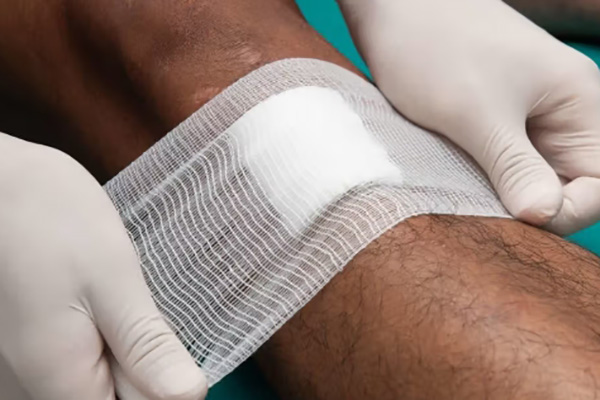Choosing the right gauze for an open wound can significantly impact the healing process. With a variety of gauze types available on the market, it can be challenging to determine which one is best suited for your specific injury. This comprehensive guide will help you understand the different types of gauze and their applications.
Understanding Gauze
Gauze is a porous, woven fabric commonly used in medical dressings. It is highly absorbent and allows for the passage of air, making it ideal for covering wounds. However, not all gauze is created equal. The type of gauze you choose should depend on the size, depth, and severity of your wound.
Types of Gauze
- Plain Gauze: This is the most basic type of gauze. It is highly absorbent and can be used for a variety of wounds. However, it does not have any added features, such as antimicrobial properties or adhesive backing.
- Non-Adherent Gauze: This type of gauze has a thin, non-stick coating that prevents it from adhering to the wound bed. This can reduce pain and trauma during dressing changes.
- Iodoform Gauze: Iodoform gauze is impregnated with iodoform, an antiseptic agent. It is often used for wounds that are at risk of infection.
- Petroleum Gauze: Petroleum gauze is impregnated with petroleum jelly, which helps to keep the wound moist and promotes healing. It is often used for dry wounds or burns.
- Hydrogel Gauze: Hydrogel gauze is a soft, gel-like dressing that contains a high percentage of water. It helps to hydrate the wound and promote healing.
Choosing the Right Gauze
When choosing gauze for an open wound, consider the following factors:
- Size and depth of the wound: For small, superficial wounds, a simple gauze pad may suffice. Larger or deeper wounds may require a more complex dressing.
- Amount of drainage: If the wound is producing a lot of drainage, you may need a highly absorbent gauze.
- Risk of infection: If the wound is at risk of infection, you may want to choose a gauze with antimicrobial properties.
- Pain level: If the wound is painful, a non-adherent gauze may be more comfortable.
Additional Tips
- Always follow your healthcare provider’s instructions.
- Change your dressing regularly, or as directed.
- If you experience any signs of infection, such as redness, swelling, or pus, seek medical attention immediately.
- Consider using a wound care product in conjunction with gauze to promote healing.
Conclusion
Choosing the right gauze for an open wound is an important decision. By understanding the different types of gauze and their applications, you can make an informed choice and promote optimal wound healing. If you are unsure about which type of gauze to use, consult with a healthcare professional.
Note: This is a general guide and may not be suitable for all types of wounds. Always consult with a healthcare professional for personalized advice.
Post time: 8月-19-2024






